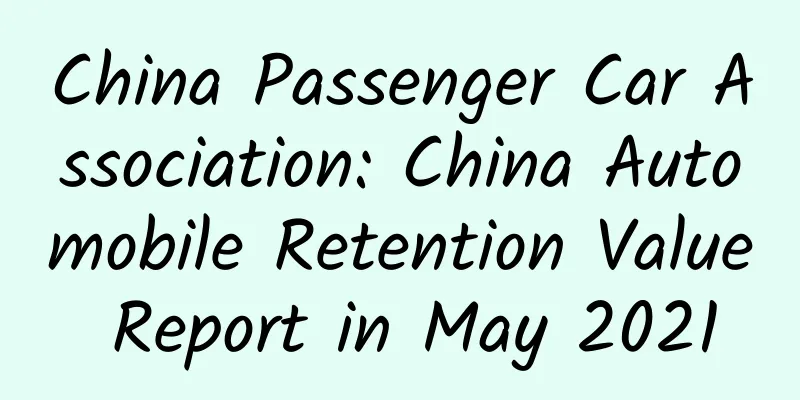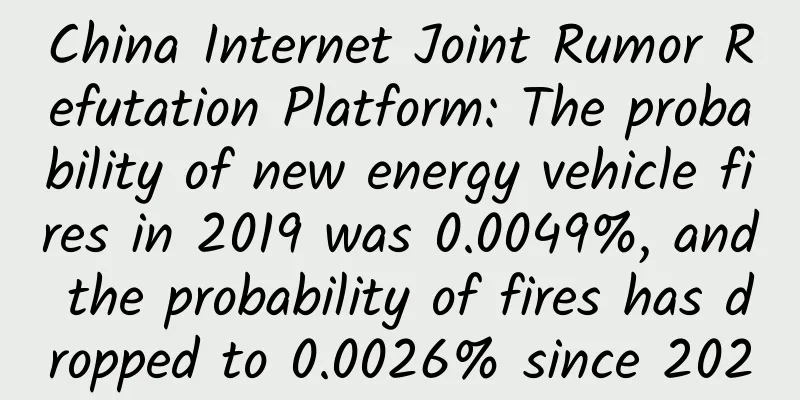China Passenger Car Association: China Automobile Retention Value Report in May 2021

|
Policy Direction: "National Consumption Promotion Month" is in full swing Hot Events——Smart Cars Have Laws to Follow Changes in online vehicle supply: Second-hand vehicle supply resumes growth Value retention rate at each level - changes in supply and demand lead to price increases Changes in the new energy vehicle market: battery swapping is gaining popularity The value retention rate of different types of new energy vehicles - the overall value retention rate of new energy vehicles has rebounded |
<<: How can Apple TV win in the North American market where there are so many experts?
>>: China Passenger Car Association: Shanghai Automobile Market Registration Situation in May 2021
Recommend
Detailed explanation of the use and properties of three types of animations in App development
[[437158]] This article is reprinted from the WeC...
2014 Mobile Internet Data Report (Full Version)
Mobile Internet information TalkingData released ...
How can a WeChat public account quickly increase its followers from “0” to “1000” in a single day?
Increasing fans of public accounts has always bee...
WeChat 8.0 status update: 28 new statuses added, including "split" and "with baby"
Have you updated WeChat 8.0? Upon investigation, ...
The three stages and effects of the massive Qianchuan launch!
Since its full launch, Juliang Qianchuan has been...
Double the battery life of your phone with just one piece of glass
When it comes to keeping smartphones and laptops ...
It suddenly gave their world a sound.
The sound of traffic on the street, The sound of ...
One lie down, two clap, three roll, fall into the ice hole, remember this can save your life →
On December 10, a middle school student in Fushun...
Regarding travel during the Mid-Autumn Festival! The Ministry of Culture and Tourism issued a reminder
The 2024 Mid-Autumn Festival holiday is approachi...
The resolution of atomic images has been refreshed again. Is the microscopic world also about to enter the era of high definition?
Scanning tunneling microscope Scanning Tunneling ...
How much does it cost to make a sports mini program in Anshan?
In order to better penetrate into various industr...
How much does a set of 2022 Asian Games commemorative coins cost? How to make an appointment? Reservation entrance attached!
In April 2022, the central bank issued an announce...
A practical example of setting up FEED for Douyin live broadcast room. Do you want to learn it?
In May, ByteDance launched the FEED direct live b...
E-book project that can easily earn 30,000+ yuan a month, operation process from 0 to monetization, proven to be effective
Course Description Many times, some inconspicuous...
Pure electric vehicles are more environmentally friendly than hydrogen fuel cell vehicles
In a recent study, researchers from the United St...









